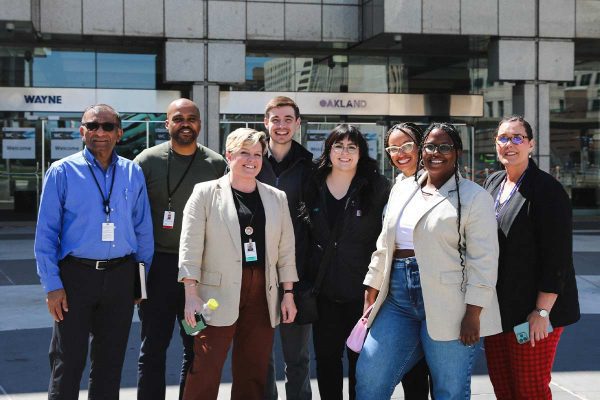During a Green Roof Garden Party and Learning Tour on June 11, about 25 association meeting professionals and industry partners of the ASAE Convene Green Alliance (CGA) discovered the source of vegetated roofs’ popularity and how they could benefit conferences and events.
“An impressive number of hotels and other meeting venues are adding or already maintaining extensive green roofs, including major convention centers such as Chicago, Baltimore, Nashville and, soon, Miami Beach,” said Kristin Clarke, director, CGA. “With increasing tax incentives and other regulations being crafted by cities and municipalities to encourage green roof construction as well as the myriad operational, aesthetic and ecological benefits offered by green roofs, these facilities are sure to become an even more common feature at meeting properties. Planners should monitor this trend and learn how they might take advantage of green roof benefits to add value to their own sustainable meetings.”
Clarke identified a long list of green roof benefits, national and international trends within the soon-to-be $8-million industry, ways that meeting planners might use green roofs creatively to impress and educate attendees and questions that meeting planners should ask about them on site tours.
“As more associations boost the sustainability goals and expectations of their gatherings and as host cities invest in new and upgraded meeting venues that embrace green roofs as key elements of that progress, these facilities are becoming more top of mind for planners as they should,” said Clarke.
The group also toured the blooming 3,000-square-foot green roof of the American Society of Landscape Architects (ASLA) in downtown Washington, D.C.
Keith Swann, ASLA’s green roof expert, detailed the process his association followed to design, develop and implement its own award-winning green roof. He then guided the group around the facility, pointing out slope considerations, soil and design features, and the array of blooming cacti, wildflowers and tough, drought-resistant sedum that cool building temperatures by more than 40 degrees.
While the initial cost of a green roof is greater than that of a traditional roof, according to Swann, ASLA has saved considerable energy costs and benefitted from the roof in other ways too.
Benefits of green roofs:
- Many green roofs are aesthetically pleasing and are used by hotels to provide garden views or artscapes for guests.
- They are often used by chefs for hyper-sourcing, growing local and exotic herbs and produce onsite. Beehives are commonly installed on green roofs, so chefs can harvest the honey for cooking, selling and making signature spa products. Hyper-sourcing improves food quality and local flavor at a lower cost and with a good story to serve up.
- Many properties make their green roofs available to groups, by private arrangement or because of general public access. Even if a facility’s roof isn’t accessible for events or tours, green roofs send a message of sustainability to any meeting and lower operational costs that affect a planner’s bottom line.
- Green roofs offer potential educational opportunities for spot learning during breaks or receptions about ecology, herb-growing, honey sampling, architectural design, butterfly identification and gardening.
- They can be places of quiet respite for tired attendees or clients. Health care facilities are among the fast-growing adopters of green roofs, in part, for this reason. Also, studies show that natural environments promote retention of new learning and reduce stress.
- Green roofs help destinations earn coveted LEED designations, the benchmark of sustainable building practices, which makes properties more attractive to meeting planners who want greener destinations and sustainable meeting practices.
- Operationally, green roofs are vital tools for controlling storm water runoff, a problem in major host cities, such as Pittsburgh and Philadelphia. Green roofs hold up to 75 percent of rain that falls on them, slowly filtering and releasing the water as natural irrigation for rooftop plants, evaporation that cools “urban heat islands” caused by nearby concrete buildings and streets and as cleaner and slower-moving water into sewer systems.
- They improve air quality by sequestering carbon and cleansing pollutants.
- They save energy, insulating buildings in the winter and cooling them in the summer.
The event also included a Fair Trade chocolate sampling donated by Divine Chocolate, which distributes out of Washington, D.C. and supports sustainable meetings.





























